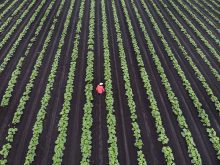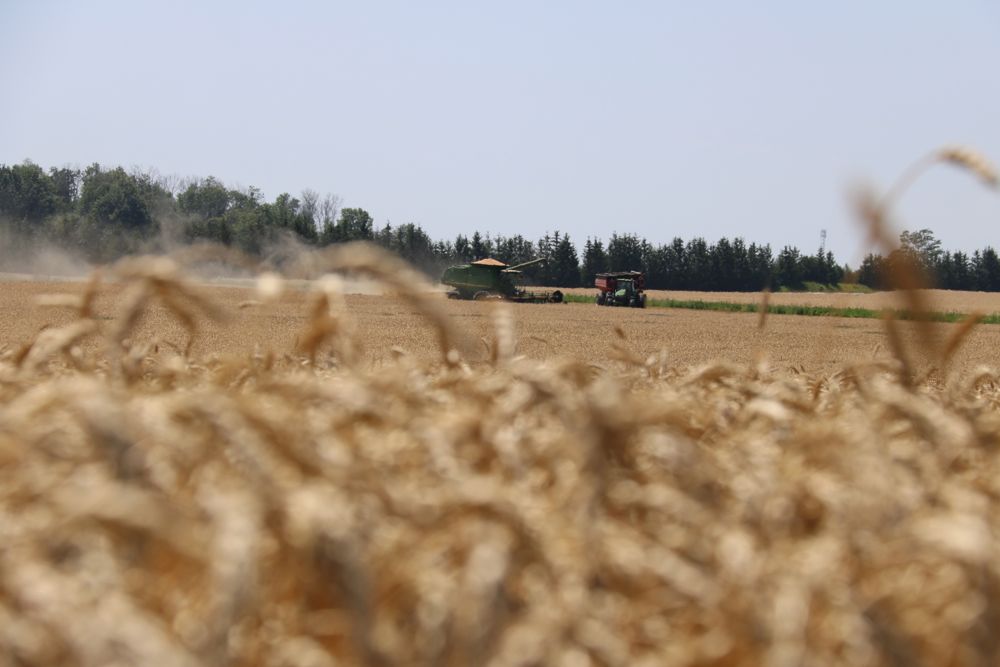So the news is in. Agriculture is facing yet another crisis. This time, it isn’t a trade issue, commodity prices or politics. Instead, it’s the pressing shortfall in human resources for the agri-food, fuel and biotech industry.
The number of farmers is falling — just check any recent census. But the demand for all kinds of jobs pertaining to agriculture is growing, and not just for those who drive a tractor, scout fields or breed the latest varieties.
Read Also

Could crop sharing be a viable option for your farm?
Crop sharing could be a good option for young and beginning farmers.
To keep viable, Canadian agriculture will need engineers, biochemists, video producers, lawyers, business planners — the list is seemingly endless.
The question is, where will we find them?
One group that’s looking is Ontario Agri-Food Education (OAFE), a not-for-profit established in 1991 through the Ontario Ministry of Agriculture and Food to help the province’s teachers do a better job of making their students aware of agriculture.
“Ag in the classroom” has been a key OAFE program, but in 2012, the group also launched the Teacher Ambassador Program, a very different type of resource aimed primarily at engaging high school students in learning all that agriculture has to offer.
“It’s impacting students at the intersection where they’re actually having those thoughts (about a career),” says Colleen Smith, executive director of OAFE. “It’s great for younger students to know about agriculture, but our purpose with the Teacher Ambassador Program is to have a very targeted delivery system aimed at a wider audience than OAFE has ever targeted before.”
- From the Manitoba Co-operator website: Getting youth involved key to winning, says speaker
In the past, OAFE developed its programs and promoted them to traditional classroom teachers. Now, they’re aiming at the next generation of educators who are currently underemployed, by hiring them to conduct classroom sessions as teacher ambassadors.
“This is not a guest-speaker program; they are teachers that are trained to deliver classroom lessons about the agri-food sector, lessons they take with them for life,” says Smith. “They have new skills in their tool kit that differentiate them in the marketplace. And that’s the win-win of this program.”
“It’s definitely growing,” says Rachel Hendriksen, outreach co-ordinator for the program. Already this school year, teacher ambassadors have conducted 162 lessons, compared to 131 for all of last year.
Measure the difference
According to a detailed study conducted late last year by Synthesis Agri-Food Network in Guelph, the impact of the ambassador program is actually measurable. Prior to the 2013 Canada’s Outdoor Farm Show, students participating in the program were asked three questions: 1. What is agriculture? 2. Name a career in agriculture, and 3. What’s one question you have about agriculture?
Then students toured the show near Woodstock, including stops at a seed company display, an equipment manufacturer and a robotic milking exhibit, among others. The impact was immediate. Students were asked the same three questions, and the second question yielded a substantial increase in career opportunities.
“We’re finding exactly the same thing in our classrooms,” says Hendriksen, who finds that unless students are from a rural background, they have very little first-hand experience with the sector. “Afterwards I find they’re starting to see jobs that are part of a bigger system, but also include farming. The examples we have are arborists, engineers, journalists — they’re starting to see that there are other career opportunities.”
It’s a way of going beyond the online and video resources developed by other companies and organizations which are often geared to those who are already engaged in agriculture at some level.
Teacher ambassadors can showcase agriculture across a variety of career options, appealing not only to those familiar with agriculture, but urbanites too.
“One day, there were two students I was talking to, and to one I said, ‘Have you ever considered a career in agriculture?’” says Hendriksen. “He said, ‘No.’ And I said, ‘Well, what do you think you’d want to do?’ And he said, ‘I want to work in the environment.’ I had to say, ‘Well, chances are, you’ll definitely be working in agriculture.’”
More wins waiting
Smith believes the ambassador program still has a long road ahead of it, in spite of its many successes. She points to the fractured nature of agriculture itself, with its many voices, mandates and priorities.
The ambassador program provides training and resources to guide new teachers through many agri-food hot topics, but on its own, this isn’t enough. The culture within agriculture needs to change as well, and Smith acknowledges that won’t happen overnight.
“We have to let go of our outdated notions in agriculture,” Smith says. “We need to be positive and proud.”
“Is it important for Canada to continue to produce its own food? That’s a pretty basic question, but I don’t think anyone is thinking about that now because we already have so much of it,” Smith adds.
She warns too, though, that it’s possible to get lost in the buzz about the industry, such as “three jobs for every graduate” or the job opportunities arising from new technology. “More important to me is how the Canadian public supports a national food strategy that will keep the food jobs in Canada. Why are we importing so much food when Canada is prolific in food production, and what is the impact on our own jobs? When you look at that reality, you wonder what the heck’s going on here.”
No apologies
Among the ambassador program’s big supporters is Lorie Jocius, in charge of special projects with Canada’s Outdoor Farm Show and the current chair of OAFE’s board of directors.
“Unless we want to be 80 and still doing these jobs, we need to engage the younger generations,” Jocius says. “This program is how we’re doing it more effectively.”
Jocius watched the impact of the farm show tour last September, from revealing that car parts are now made out of soybeans, to the mechanics involved in milking robotics or new seeding technology. She also recalls the impact of a John Deere executive saying there is more computer source coding in the newest combine than in a Boeing aircraft.
That changing face of technology means new opportunities. But Jocius also maintains that the issue has to be addressed now, not in five or 10 years.
“I think they’re starting to get it,” says Jocius, “but somebody still needs to step up and say, ‘If you guys still want to have a vibrant agricultural industry in this country in the next 20 to 30 years, you’d better start doing something about the educational concerns within the school system, and with regards to careers.’”
The 2013 Synthesis Agri-Food Network study compared Ontario’s previous approaches, accounted for OMAF’s expectations and even compared OAFE’s program to similar efforts in Michigan and Illinois. Based on that research, Synthesis president Rob Hannam believes the ambassador program is unique, and he isn’t sure other organizations would be capable of copying it.
A key feature is that the program is delivered by certified teachers, Hannam says. On top of that, though, is the link to the Outdoor Farm Show, and the wide scope of the show itself, with all of the things students can see as they’re walking around.
And it does make a difference, says Hannam, who points to the students’ ability to name careers in agriculture. “We moved up by 30 per cent just by exposing people to the careers in farming at the Outdoor Farm Show through the Teacher Ambassador Program,” he says. “That showed me that the program was a big success.”
That success can’t come soon enough, says Jocius. “Employment trends tend to work in waves that are usually reactionary rather than from reflective analysis,” Jocius says. “If you’re reactionary when it comes to an employment trend, you’re already behind the eight ball. We already know there’s going to be a shortage coming and, personally, I think there’s a shortage now. And unless we’re prepared to let our kids or grandkids get their food in cans from other countries, we need to start educating them now.”
















